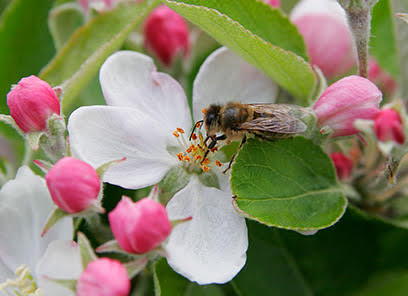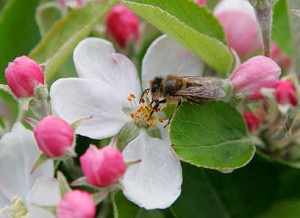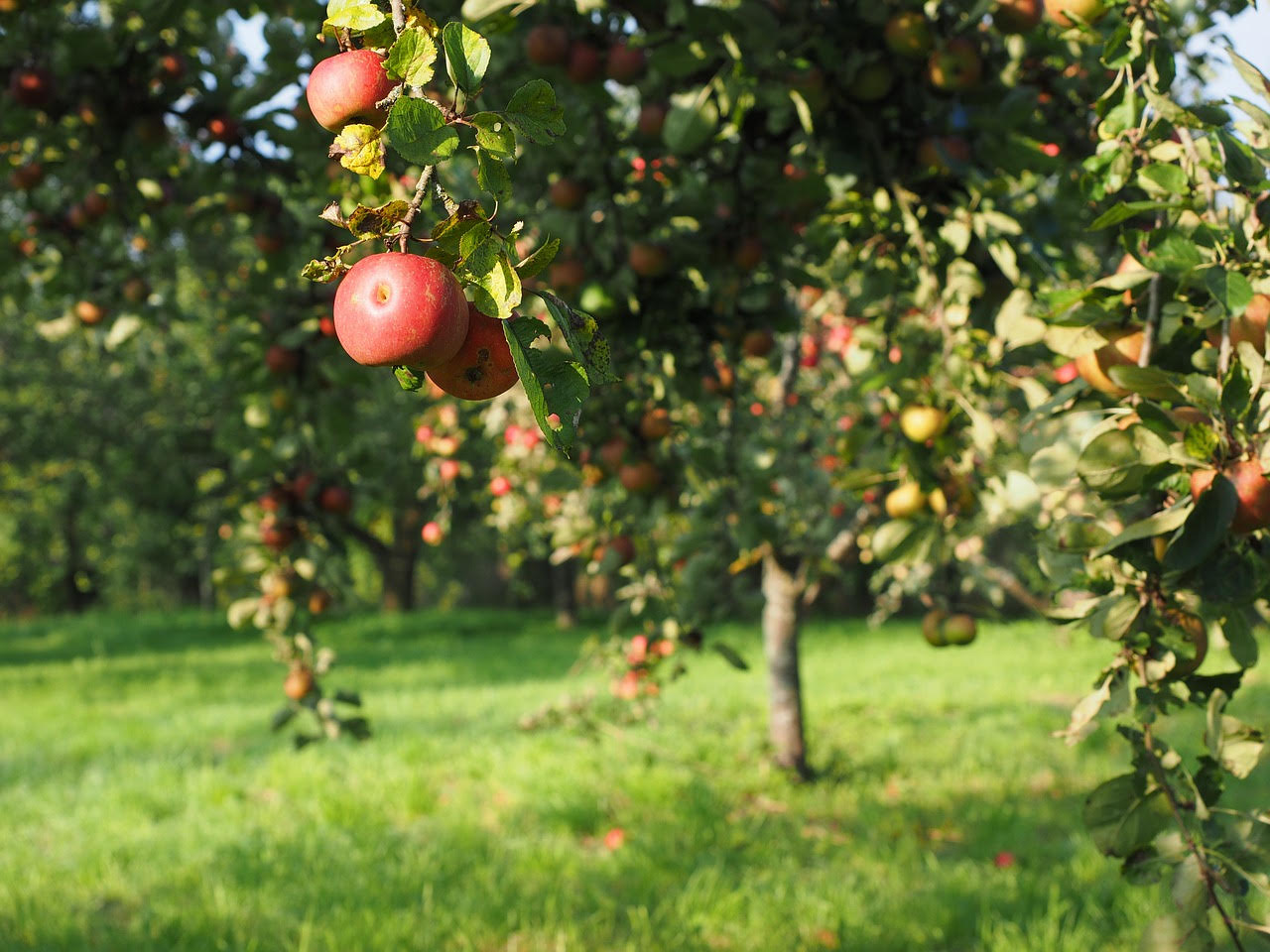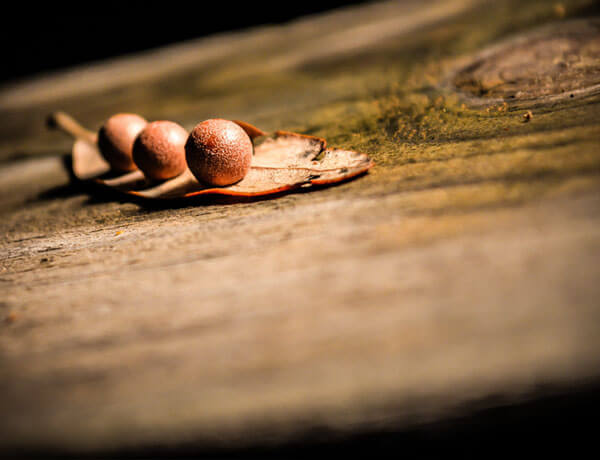-

Planting, Nurturing and Picking the Best Apples for Apple Bobbing
28th October 2015 • General • Stephanie DonaldsonLooking back on it now I fail to see the fun in apple bobbing but for some bizarre reason, fun it was. In fact, sticking your head into a dustbin of freezing cold water with your hands tied behind your back whilst desperately trying to latch onto an apple with your incisors before you drowned was the absolute pinnacle of Halloween fun. Trick or treat ? Pah.

I can only assume that this game was conjured up by someone desperate to find a use for a surfeit of apples. At this time of year there are more apples around in peoples gardens than you can shake a stick at but many of them can be easily stored rather than wasted. As a general rule it’s the later ripening ones which will store for longer like Tydeman’s Late Orange and Suntan which will keep until early spring.An ordinary fridge is ideal but by no means essential. The best think to do is to inspect each one and chuck out any which are even suspiciously manky and then wrap them individually in a piece of paper about the same size as this page and then put them in the bottom of a box in a single layer. Store them somewhere cool, dark and frost free like an attic or shed.
[Tweet “It’s an absolute travesty that we spend so much money on imported apples when we’ve got so many of our own excellent varieties”] So often we inherit a tired old fruit tree from a previous owner but it really makes sense to plant a variety of your own choice which you actually like and want to eat.
 Picking the right cultivar is crucial and it makes sense to not only choose one you like but one which is also disease resistant. Discovery and Epicure are both early fruiting dessert apples resistant to scab and powdery mildew and they are also good for cooler districts. For a mid season crop Lord Lambourne is generally disease free and crops eavily and regularly almost anywhere. For late cropping I rather favour the dessert apple Kidd’s Orange Red which is sadly often overlooked even through it has all the characteristics of the notoriously fussy Cox’s Orange Pippin without all the problems of disease and maintenance.
Picking the right cultivar is crucial and it makes sense to not only choose one you like but one which is also disease resistant. Discovery and Epicure are both early fruiting dessert apples resistant to scab and powdery mildew and they are also good for cooler districts. For a mid season crop Lord Lambourne is generally disease free and crops eavily and regularly almost anywhere. For late cropping I rather favour the dessert apple Kidd’s Orange Red which is sadly often overlooked even through it has all the characteristics of the notoriously fussy Cox’s Orange Pippin without all the problems of disease and maintenance. A vitally important thing with apples is to make sure there is a handy pollinator. This means another tree only a short bees flight away which flowers at approximately the same time and can provide pollen to fertilise the other tree and allow the formation of fruit. New trees are always labelled with the number of their pollinating group and they can be cross pollinated by a tree in the same or a neighbouring group. It’s worth remembering that Crab apples also make excellent pollinators.
A vitally important thing with apples is to make sure there is a handy pollinator. This means another tree only a short bees flight away which flowers at approximately the same time and can provide pollen to fertilise the other tree and allow the formation of fruit. New trees are always labelled with the number of their pollinating group and they can be cross pollinated by a tree in the same or a neighbouring group. It’s worth remembering that Crab apples also make excellent pollinators.Late autumn or early winter is the ideal time to plant because bare root trees are available and you normally get far more choice than with container grown stock.
Apples will grow on a wide range of soil but very slightly on the acid side of neutral is best. It should be rich, free draining soil but if it’s poor you can invigorate it with fertilisers and choose a vigorous rootstock to compensate. A sunny spot is needed with some protection from wind and you must avoid frost pockets because a late frost will take out all the blossom and make fruit quite literally rather thin on the ground.
Make a hole at least a metre wide, slice off the turf and put it to one side. Dig out about a spade’s depth of topsoil and stack it separately. Knock in a tree stake off centre on the side from which the prevailing wind blows and chuck some upside down turf back into the hole. If you haven’t got any turf, a bucket or two of leaf mould is a more than adequate substitute. Fill a bucket with well rotted manure, mix in a handful of bone meal and a handful of seaweed meal and then fork it into the excavated topsoil. Stand the tree at the right depth in the hole and start to shovel the topsoil back in. If it’s a bare root tree shake it up and down firmly to settle soil all round the roots, then tread the soil gently with your heal to firm it in and attach it to the stake with a tree tie.
After that you need to keep a metre wide circle around the base free from grass and weeds because they would compete for nutrients and water. A mulch is a good idea and in the first four years, watering in summer, particularly during dry spells, will allow them to crop up to a significant three years earlier than they would otherwise. But while you’re waiting there are always plenty of hopeful neighbours giving away bags full of apples at this time of year.

Rootstocks
Apple trees, for some reason, grow rather badly on their own roots. Consequently the trees we buy from nurseries come already grafted onto appropriate rootstocks which effect the ultimate size and fruit yield of the tree. Dwarfing rootstock for instance will make trees come into fruit more quickly, make pruning less complex and make picking far easier. But a smaller tree needs more fertile soil, regular watering and produces much less fruit so you need to choose carefully. The rootstock is always shown on the label.
M27 is a very dwarfing rootstock producing trees no higher than head height suitable for heavy fertile soil and cropping early on in life. Needs permanent staking.
M9 Dwarfing to about 2.5metres, needs a fertile rich soil, requires staking and crops early on in life.
M26 Also dwarfing to around 3 metres and small enough to make picking and pruning easy. Suited to most conditions but preferring lighter soil.
MM106 Semi dwarfing to about 5 metres and as big as you’d want in most gardens. Suitable for poor soils which will keep it on the small side..
MM111 A very vigorous tree unless grown on very poor soil. It can reach over 7 metres and is suitable for a traditional orchard.
A little annual maintenance along the following lines will stop your apple tree from becoming neglected.
Article supplied by multi-award winning landscape gardener Andy Sturgeon. See more of Andy’s work and list of awards at www.andysturgeon.com.;









